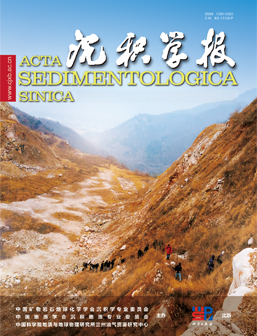Factors Affecting Cathodoluminescence of Carbonate Minerals Based on LA-ICP-MS Analysis: A Case Study of the Middle and Lower Ordovician in the Southern Margin of the Ordos Basin
doi: 10.14027/j.issn.1000-0550.2024.112
- Received Date: 2024-08-22
- Available Online: 2024-12-20
-
Key words:
- carbonate minerals /
- cathodoluminescence /
- LA-ICP-MS /
- diagenetic stage /
- Ordovician
Abstract: [Objective] There is a close relationship between the cathodoluminescence (CL) characteristics of carbonate minerals and their trace and rare earth element (REE) contents. This study aims to investigate the relationship between these factors. [Methods] Cathodoluminescence and laser ablation inductively coupled plasma mass spectrometry (LA-ICP-MS) were used to test carbonate rock samples from the Lower and Middle Ordovician on the southern margin of the Ordos Basin. Statistical methods and classification algorithms were applied to analyze the test data, and common REE indicators were used to evaluate the properties of diagenetic fluids. [Results] The study reveals that matrix dolomite exhibits weak to moderate red luminescence under cathodoluminescence, with both zoned and uniform luminescence. Dolomite cements, with high Mn and Fe contents, are often zoned or non-luminescent. ANOVA and Tukey's HSD post-hoc tests indicate that Mn, Fe, La, Ce, Pr, Nd, Sm, Eu, Gd, Tb contents, and the Fe/Mn ratio significantly influence the cathodoluminescence of carbonate minerals. Non-luminescent and strongly luminescent groups are relatively easy to distinguish: non-luminescent minerals generally have Fe contents greater than 10,000 ppm or Mn contents less than 40 ppm. Additionally, the non-luminescent group with Fe contents over 10,000 ppm displays REE distribution patterns enriched in MREE, while the strongly luminescent group shows LREE depletion and low Fe/Mn ratios. Using comprehensive dimensionality-reduced parameters of trace and rare earth elements, in conjunction with Mn content, effectively distinguishes the extremely weakly luminescent, weakly luminescent, and moderately luminescent groups. The nature of diagenetic fluids during diagenesis impacts carbonate sediment composition, mineral content, and trace and rare earth element variations, directly influencing carbonate mineral cathodoluminescence. [Conclusion] By combining in situ trace element testing with various data processing methods, this study provides a more quantitative understanding of the impact of trace and rare earth element contents on cathodoluminescence intensity. These findings offer valuable insights for both domestic and international scholars studying the factors affecting cathodoluminescence.
| Citation: | Factors Affecting Cathodoluminescence of Carbonate Minerals Based on LA-ICP-MS Analysis: A Case Study of the Middle and Lower Ordovician in the Southern Margin of the Ordos Basin[J]. Acta Sedimentologica Sinica. doi: 10.14027/j.issn.1000-0550.2024.112 |






 DownLoad:
DownLoad: